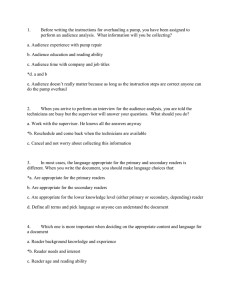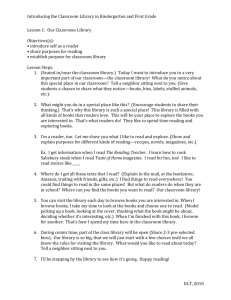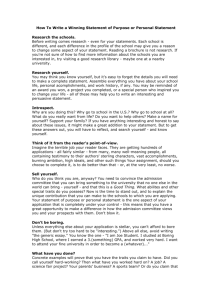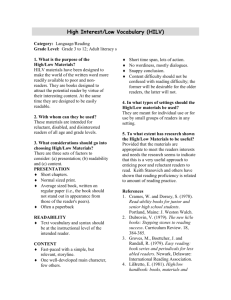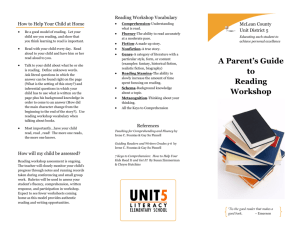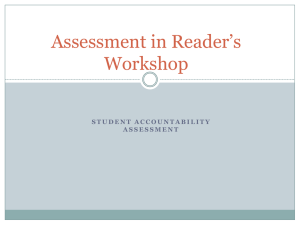When Readers Struggle: Teaching That Works
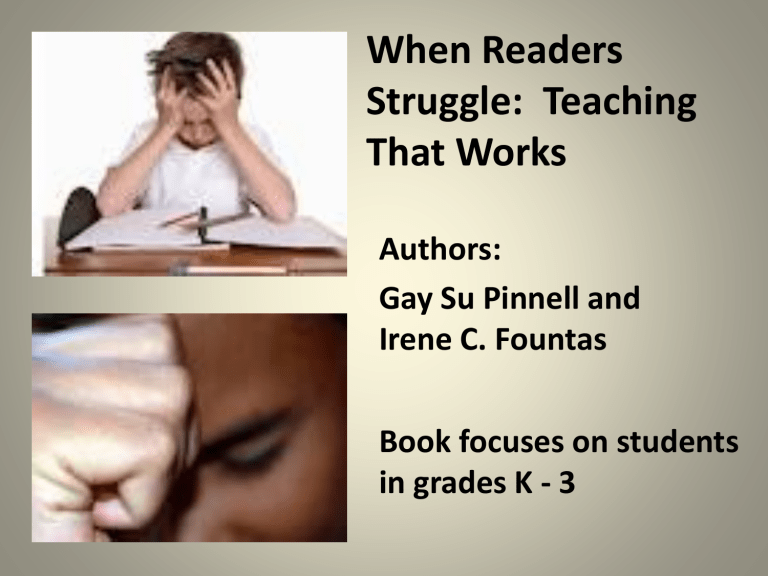
When Readers
Struggle: Teaching
That Works
Authors:
Gay Su Pinnell and
Irene C. Fountas
Book focuses on students in grades K - 3
Characteristics of struggling readers as shared by those in attendance:
• Laboriously sound out words
• Can’t blend letter sounds
• Difficulty taking words apart
• Read through punctuation
• Word substitution
• Don’t self-correct
• Exhibit “desperate behavior” constantly pausing, looking around, passiveness
• Lack self-monitoring – student continues to read through with errors that don’t make sense
• Teacher dependent
• Unable to summarize what they’ve read
Ideas shared by Irene Fountas
• No successful reading without comprehension! If students are not grouping words, if they are reading through punctuation, reading one word at a time, then they are not comprehending.
• Meaning is the difference between reading words or reading the writer’s language or ideas.
• Simply retelling is ineffective. It’s more important that the reader summarize. While reading students need to carry important information forward to comprehend and summarize.
• Students need to be taught how to self-monitor. The student doesn’t automatically pick this up on their own. Teacher needs to teach this to students!
• “Waiting to see” is testing. Teaching is preparing students for success. We need to set students up for success. Give them the scaffold to process what they read. Set them up to read it well!
12 Guidelines for Powerful Teaching
1.
Notice student’s precise reading behavior. What did you see the child do? (use beginning or ending sounds, parts of words, use language?)
2.
Eliminate ineffective reading behavior and help the reader do what proficient readers do. STOP! The child’s wrong behavior, show them how to do it right, have them practice putting words together, tell them it sounds like talking. Say,
“I’m going to help you do this” and then insist on it every day after that. Teach hard for fluency – be persistent and insistent! Teach – Prompt – Reinforce
3.
Select a text which the reader can learn how to read better – not too difficult and not too easy. The leveling system is a teacher’s tool.
4.
TEACH THE READER, NOT THE TEXT. Teach them what effective readers do. This is higher level teaching than simply teaching the words.
5.
Teach the student to read written language, not words. Does that look right, sound right, and make sense?
6.
Teach for the student to initiate effective problem solving actions. What can the child do to help himself? You teach them how to problem solve so they can take over their own problem solving.
7. Effective teachers use clear, precise language.
Examples given in prompting guide 1.
8. Ask the student to do only what you know he can do.
Don’t do for the student what he can do for himself!
Demonstrate, teach, show, then see if they can do it!
9. Don’t clutter the teaching with too much talk. Kids talking is their thinking.
10. Focus on self-monitoring, self-initiating, regulating behaviors. Tell students you know they can do it.
Believe the child can learn to read. Observe how the child walks, talks, and thinks – then teach them how to do what and how he needs to do it. This is a life skill!
11. Build on examples of successful processing and responding. Build on the child’s successes – you have to start somewhere.
12. Teach for fast fluent processing and responding (so they look good in front of peers).
Gay Su Pinnell briefly reviewed charts and parts of the book worth referencing. Due to copyright laws we are not able to print those off for you.
• Chapter 13 – Writing: Shared, Independent, and
Dictated Writing
• Chapter 15 - 15 Keys to Effective Intervention
• Chapter 16 – Fluency (good charts p. 375 and p. 378)
• Chapter 17 – Prompting and Teaching for
Comprehension
• Chapter 18 – How to Relate Competencies in the
English Language
• Chapter 21 - 2 Day Lesson Framework chart on p. 510
• Appendix - Guide for Observing and Noting Reading
Behaviors – pp. 523 and 524






